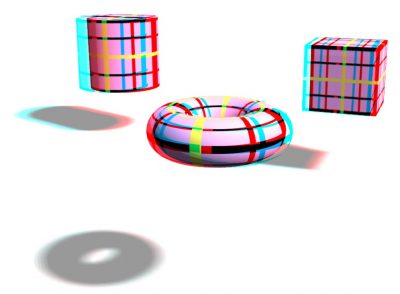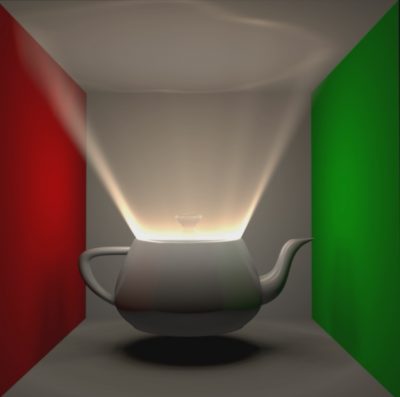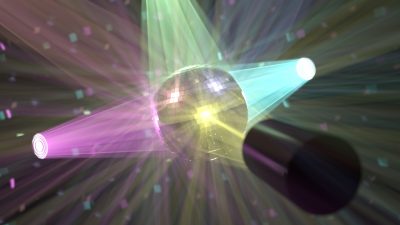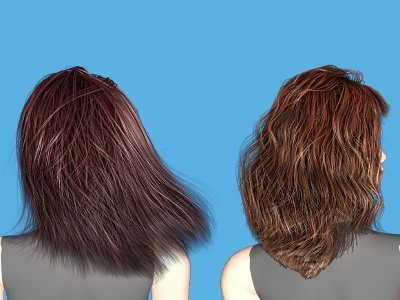Disney is the largest entertainment company in the world, with studios, TV networks (ABC), sports cable channels (ESPN), theme parks, animation and live action film businesses, theater and even cruise ship interests. Not surprisingly, Disney has a huge research and development commitment. Since 2008, its worldwide R&D team has been unified and, in part due to the influence of its acquisition of Pixar, this unified R&D team is open and publishing. In fact, at SIGGRAPH in Vancouver this year and in Hong Kong at SIGGRAPH Asia, Disney R&D, under the banner of Disney Research Zurich, is one of the most prolific research contributors in the industry.
We spoke to Dr. Markus Gross, director of Disney Research Zurich, and delved into Disney’s recent and open contributions to the computer graphics community and his own opinions on the future of stereo visualization – and interestingly the way home viewing will flip the stereo experience away from stereo in cinemas.
[fx_audio src=”/wp-content/uploads/2011/09/DisneyResearch_MarkusGross.mp3″ link=”/wp-content/uploads/2011/09/DisneyResearch_MarkusGross.mp3″]
– Click on the player to listen to Mike Seymour’s in-depth discussion with Dr. Markus Gross from Disney Research Zurich.
Disney Research

Disney Research is part of The Walt Disney Company and since 2008 has used a network of labs in Zurich, Pittsburgh, Boston, and ties with Pixar, Walt Disney Imagineering and its Animation Studios, to collaborate on technology for Disney’s film, animation and theme park operations. There are about 50 senior research scientists and around 200 research staff in total around the world. Those locations also represent areas with key academic institutions such as the Swiss Federal Institute of Technology Zürich (ETH), which has 21 Nobel Laureates, and Carnegie Mellon University, as well as Harvard and MIT in Boston. In short, Disney has taken its research centers to the world’s best centers of research excellent, rather than trying to attract PhD’s to them, in say Southern California.
The director of Disney Research Zurich, Dr. Markus Gross, says that the beginnings of Disney Research hail back to 2005/2006 “as a wider strategy of The Walt Disney Company to focus more on technology. It’s important to realize The Walt Disney Company is the world’s largest entertainment company with a wide spectrum of business activities. This not only includes computer animation and live-action studios, but also parks, games studios, ESPN, ABC, cruise ships and hotels.”

Dr. Gross’ own areas of research have historically been in point-based computer graphics, 3D video and stereoscopy, and physically based modeling. He personally has published in excess of 300 papers, including more than 30 SIGGRAPH papers. Dr. Gross was the SIGGRAPH technical papers chair in 2005, and he says it is one of the most refined and rigorous reviewing processes within computer science.
Disney Research Zurich has at least 6 papers in SIGGRAPH Asia alone. In terms of the areas of interest that Disney Research papers are covering at the conference, Dr. Gross notes three main ones. The first relates to advanced image synthesis and one of the papers, entitled, ‘Progressive Photon Beams’, presents ‘a new consistent rendering algorithm capable of simulating extremely complex lighting in both homogeneous and heterogeneous media efficiently.’ Think the synthesis of fog, mist and haze or beams of light.
The related paper, ‘Modular Radian Transfer’, deals with pre-computed light transport. “In certain situations,” says Dr. Gross, “you can decompose the space into several primitive shapes and you can pre-compute this complex direction of light and matter within these simple blocks, and then find a way for how these blocks communicate with each other. This increases the performance of computation dramatically and it also allows for a certain degree of art directability.”
Another Disney Research paper, ‘Mixed-Order Compositing for 3D Painting’ discusses a method for letting artists create new visual styles for 3D characters in animation, relying on depth ordering. “Specifically,” says Dr. Gross, “you can create characters in a very painterly style, that look essentially like two-dimensional paintings, but where the strokes are consistent in three-dimensional space. In order to make this happen, you need to have an underlying proxy geometry and we do this through certain level-set functions.”

Stereoscopic-related papers from Disney Research will also be significant contributions at SIGGRAPH Asia. One paper looks at the development of optimized stereoscopic camera control for interactive 3D. This is particularly useful for live broadcasts where there is no time to correct incorrectly set stereo parameters in terms of the distance between the cameras and the convergence, but can also be applied to game cameras which are effectively software versions of real cameras. “Our camera analyzes the disparity field and the structure of the scene in real time,” says Dr. Gross, “and then has a procedural controller built-in that corrects the camera setting – an automatic stereographer, if you will.”
Dr. Gross believes the future for stereo lies in auto-stereoscopy, displays without the need for glasses, and partly in holography. “An important milestone towards final holographic displays and imaging is what’s called a light field,” explains Dr. Gross. “If you capture a light field, instead of two cameras you have multiple cameras and you collect a ray bundle in space, then you can do even more. You can pull any stereo pair from this light field, because you have all the images, and you can re-synthesize images in between from virtual camera positions.”
“You can also collect different pixels from different cameras and this means you can create multi-perspective images,” continues Dr. Gross. “These can be very important to correct for incorrectly set stereo parameters. They are also very important to distribute the viewing, if you sit off-center, for instance. You can also change things like the depth of field or do some of the optical processing in post-production, and this is why we are interested in this technology as well.”
fxguide asked him how many years away a very good stereo experience without glasses might be. Dr. Gross answered that in the area of home entertainment, or consumer electronics, most major companies already have prototypes available, but there are key issues still to be addressed, especially in distribution. Glasses are not the issue.
“But this is not a fundamental problem anymore,” notes Dr. Gross. “It’s essentially a problem of bandwidth and pixel resolution. In an auto-stereoscopic display, in order to get a fine viewing experience and high quality imaging, you need to accommodate more than two views, so you need to have eight to nine, or up to 20. You have to bring these 20 different views under the same pixel size, as you do for two views for a standard stereo with glasses display.”
He says there are essentially two choices – either you make the pixel surface smaller but then have to deal with a density problem, because of the need to get the illumination right, or you increase the bandwidth and perhaps rely on a fast switchable pixel display that would stagger the different views one after the other at a very high frame rate, which can be helped by some way of interpolating and synthesizing the in between images. “I’m very confident that in three years to a maximum of five years we will have very high quality auto-stereoscopic displays for our home theaters,” says Dr. Gross.
With so many papers being presented both recently at Vancouver and soon in Hong Kong, it’s clear that Disney Research has embraced the notion of open publishing. This is despite the fact that in the past Disney – a trailblazer in film and animation tech – was more secretive in sharing the magic. “It’s partly a little bit of a change of culture,” explains Dr. Gross, “which also came along with Pixar Animation Studios. At Pixar the culture has always been openness. In Disney, there was a culture of keeping the magic secret, and both make perfect sense. If you think of some of the magic happening in some of our theme parks, we typically don’t want to tell everybody our magic and tricks and technology, and this will continue to be the case.”
“There are certain areas,” Dr. Gross adds, “like areas related to high technology and very hard problems in computation, rendering graphics and computer animation where openness makes perfect sense. Because if you are open you reach out to the community. If you expose some of your problems to the larger research community, you get a lot of brilliant brains to help try and solve these problems, basically for free.”
SIGGRAPH Asia
This year more than 60 technical papers will be presented at SIGGRAPH Asia in Hong Kong (being held 12-15 December) from a record 330 technical paper submissions. “The papers are the gem of SIGGRAPH and SIGGRAPH Asia,” says papers chair Dr. Kavita Bala, an Associate Professor in the Computer Science Department and Program of Computer Graphics at Cornell University. “This is the future – the papers define where the field is going and introduce you to the bleeding edge technology.”
– Watch Dr. Bala discuss some of the tech papers to be presented at SIGGRAPH Asia.
As papers chair, Dr. Bala is responsible for putting together a programme committee of the best experts in the field across a diverse range of graphics areas. They met just prior to SIGGRAPH in Vancouver to review the paper submissions. “It’s a very rigorous review process,” she says. “We get two members from the programme committee and three external members. So you get five reviews per paper. Even if the paper is going to be rejected, there’s a lot of technical feedback we give back to help them improve their work or figure out what was wrong with their work. The papers are also published in ACM Transactions on Graphics, which is the most prestigious journal in graphics.”


According to Dr. Bala, selecting the right papers is a matter of looking for novelty. “Does it improve the state of the art? And is this a contribution that is not niche – it has to resonate with the whole community – even if it is in a particular area.” Some of the papers on Dr. Bala’s radar include one reporting on a hair dynamics tool that adds friction to the simulation of hair, and a paper on sketch-based illustration of fluid systems where, for example, a medical practitioner can sketch the illustration of a particular operation, like a heart operation, and use that to communicate to a layperson. There are also several contributions in the areas of shader simplification, architectural modeling, computational photography and stereoscopic imagery.
Industry, along with academic institutions, play a key role in the submission of technical papers and research to SIGGRAPH. Companies such as Microsoft, Weta Digital and Adobe feature heavily in the SIGGRAPH Asia, and, as discussed above, Disney Research Zurich leads with a contributor to at least six technical papers at the conference.
Images courtesy of SIGGRAPH Asia.
